Raelands Farm: Doing less in order to produce more
A triangular principle balancing environment, people and profit in equal measure is paying off for this NSW farming family.
A triangular principle balancing environment, people, and profit in equal measure is the framework around which the Raelands Farm operation in NSW is based.
And it’s a simple yet powerful premise which has allowed fifth-generation producer James McRae to balance work, family life, and profitability on-farm.
Based at Barrington on the NSW mid north coast, 35-year-old James and his wife Lauren oversee a 184ha enterprise which spans undulating country and is home to around 100 Holstein cows.
Operating since the 1860s, James’ father Chris works alongside him in a 50:50 partnership, focusing on key principles and measures designed to maximise profitability and production of the land and livestock, in the most balanced way possible.
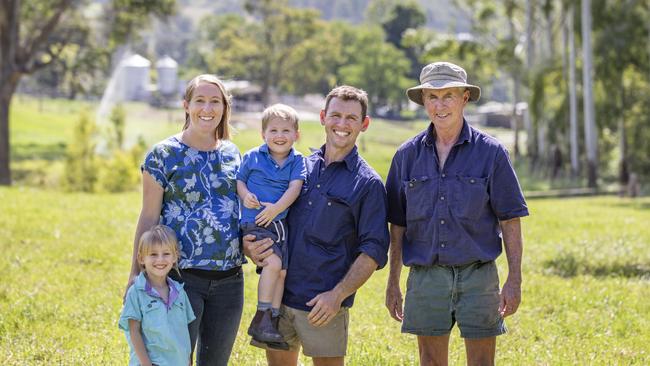
COOL CUSTOMERS
The McRae family supplies milk into Norco, milking about 100 cows with 120 lactations a year and year-round calving.
About 2500l of milk is supplied to Norco each day.
“We do calve down heifers in spring and autumn, trying to target that and avoid January and the hotter months,” James said.
“We have all our own replacement stock, and dry cows on the property.”
Production figures for the cattle sit at about 7800 litres, and 600kg milk solids per cow annually.
“We’re sort of happy with where that is sitting at the moment, under a predominantly pasture-based system,” James said.
Average rainfall for the property sits at about 990mm annually.
But James said in recent years, an ‘average’ year has been hard to come by, with only 420mm recorded in 2019 before shooting up to about 1500mm in 2020-21.
“We’re definitely wetter than last year, where we had a dry year and were irrigating through most of the winter,” James said.
“If we can get some fine weather before the frost comes, we’ll be set up really well for winter and coming into spring.”
James’s focus on careful selection of genetics is aimed at honing his herd’s production figures, with attention paid to the Balanced Performance Index.
“That gives us a broad view on what potential that heifer could have,” James said.
“We’re using pedigree as well, so we’re selecting on pedigree plus those other figures. And using the two together to determine which heifers we want to breed from, and which ones we want to keep putting on. And it’s also about keeping those records accurate, that’s the most important thing.”
Using genetics is also a bit part of keeping the bottom line of the business in check, James said.
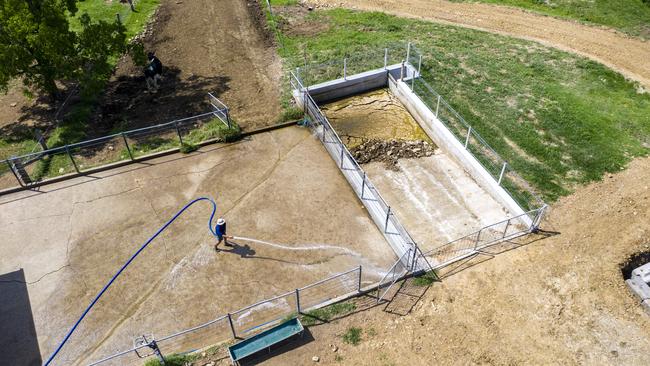
“Having a medium-sized cow that’s very efficient, and has a good genetic base to produce milk profitably is also good for the environment, you’re not struggling with animals with subpar performance that are emitting methane but not performing well,” James said.
“That plays a role in our decision making … the cows have to produce well, we’re we are supplying raw milk to Norco for milk products. The value of that milk is pretty high, and we do need to generate volume as well as quality.
“Having an animal that’s only producing 6500 litres, is just not as profitable for us.”
Monthly herd recording takes place on farm, with James assessing data such as cell count, protein, how easy heifers go into calf, and their pedigree.
“I’m not chasing purely production, it needs to be about balance,” James said.
“We’re happy with where that’s sitting, under a predominantly pasture-based system.”
The property has transition from a cropping-type system to more of a permanent pasture-based system, with a focus on ensuring ground cover.
“That also makes it a bit more simple for us to manage that system in terms of our people, too, because it means less stress, with getting the timing of cropping right,” James said.
“We do sacrifice a little bit of production because of that, it’s better in terms of simplicity.”
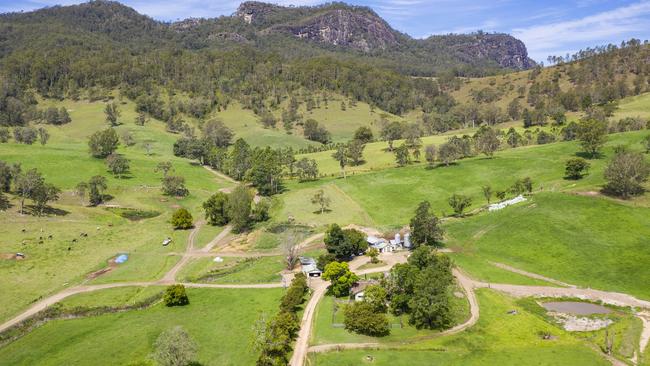
LONG-TERM VIEW
Developing a progressive and sustainable system of managing people, livestock, and the landscape has been the McRae’s focus in recent years.
It essentially means the McRaes have pared-back on more traditional practices, such as cropping which would possibly boost productivity, to favour principles which favour long-term sustainability of livestock, farming operations, and the people working for the family.
“How we run the farm, and our decisions on farm are all based around the triple bottom line. Everything we try to do is addressing those measures through business,” James said.
“If we’re looking at investment on the farm it’s with those parameters in mind.”
Upgrades have been made to infrastructure and pasture management to increase efficiency and to improved sustainability, which has resulted in enhanced yield and quality while reducing overheads.
Being led by the example set by his father, James said entrenching sustainability in the production system was central to his farming.
“Dad started that back in the 1990s, trying to push cow production, pasture improvement, and better feeding of the cows in the dairy,” James said.
“I don’t really like the idea of changing our system into higher production … it might not take advantage of the maximum potential of the cows, but it’s more sustainable.”
FARM UPGRADES
A $70,000 grant from the Woolworths Dairy Innovation Fund allowed the McRaes to invest in innovation on the farm.
This included installation of a 24kw solar system, annual tree planting projects, and a biodiversity stewardship agreement with the Biosecurity Conservation Trust for 60ha of forest on farm.
The grant has also allowed the McRaes to implement practices such as installation of a dairy solid trap, with the solids used as fertiliser to build organic matter on the farm.
Raelands Farm also engage the Australian Dairy Carbon Calculator to work out how emissions output from the farm.
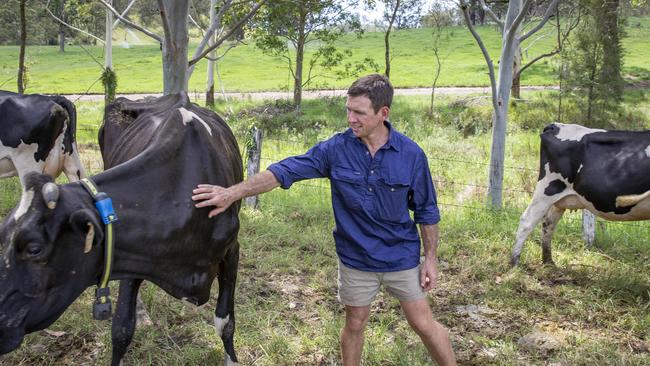
“The infrastructure upgrades have meant that the running of the farm is more efficient, allowing one of us to take time off or holidays, while the other runs the farm, which is important with a young family,” James said.
“We also entered into a succession planning process which is almost complete. We are fortunate Dad was willing to have the sometimes-uncomfortable conversations in the beginning, to form the plan and to make it financially viable for the next generation.”
Further changes made on-farm include deployment of heat detection collars for the herd, which allows James to monitor heifers and cows for ideal insemination times.
“We’re catching cows early, and allows us to select which heifers we want to keep,” James said.
Other projects include tree planting and revegetation projects on farm.
“That’s essentially a fencing cost account of waterways,” James said.
FAMILY TIME
This is another example of James’s guiding principles of balancing work, family, and farming.
“It’s not just a one-area approach. And for us, that means quite a simple farming system,” James said.
“The other thing is, my wife and Dad, we’ve all got other things on as well. I have three young kids, so I want to be able to spend more time with them, and less time out cropping or doing certain things that don’t add value.”
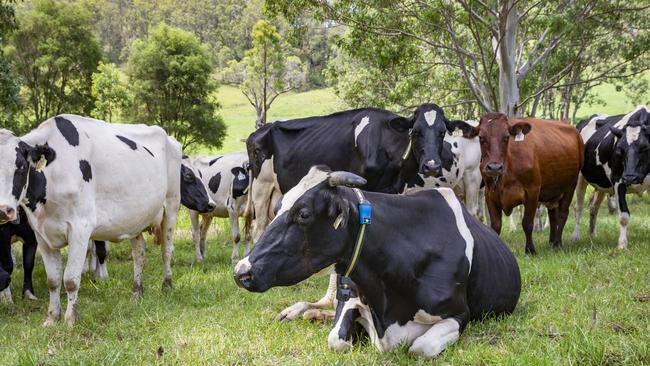
Long-term sustainability, from a livestock perspective, milk production, landscape, and considering human resources, is the focus of the McRae family in coming years.
And it’s a commitment James said has already begun to pay dividends.
“We want to be sustainable into the future,” James said.
“That’s really important for me. No-one’s going to remember at the end of the day whether you’re a profitable farm or a poor farm. That’s economy, and economy allows us to live the life we want to live now. But how the people have been treated, and how the environment looks at the end of the day, when we’re dead and gone, I think that’s really the legacy.”





